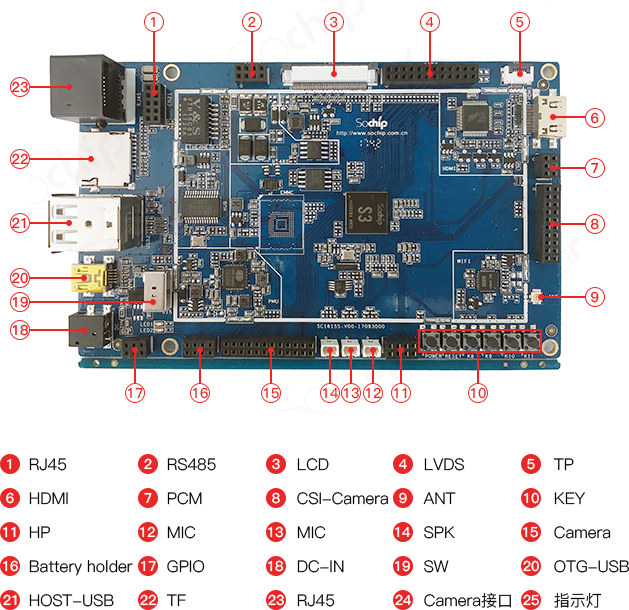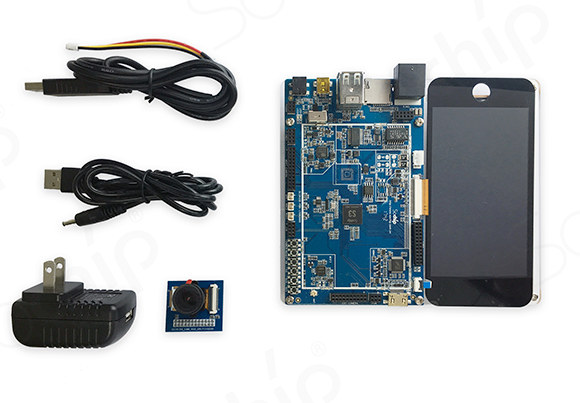Allwinner V3s processor was introduced a little over a year ago with a single Arm Cortex A7 core, 64MB DRAM built-in, and designed for camera applications with parallel CSI and 4-lane MIPI CSI2 interfaces
It looks like Allwinner has now launched an updated version with Allwinner S3, still based on Cortex A7, but increasing memory to 128MB, and adding some interfaces like I2S.
 We don’t have a whole lot of information, apart from a development board (SC1615S) on Taobao with the following (tentative) specifications:
We don’t have a whole lot of information, apart from a development board (SC1615S) on Taobao with the following (tentative) specifications:
- SoC – Allwinner / Sochip S3 Cortex-A7 processor with 128MB DDR3
- Storage – 16MB NOR Flash, 4GB eMMC flash, SPI NAND flash, micro SD card
- Display I/F – LCD, LVDS, touch panel connectors, HDMI port
- Camera I/F – 1x 4-lane MIPI CSI, 1x parallel CSI
- Audio – HP, 2x MIC, speaker headers, PCM header
- Connectivity – 10/100M Ethernet, 802.11 b/g/n WiFi + Bluetooth (AP6212 or XR819 module) with u.FL antenna connector
- USB – 2x USB host ports, 1x micro USB OTG port
- Expansion – GPIO header, RS485 header,
- Misc – 6x keys (Power, reset, volume, etc..), switch,
- Power Supply – 5V/2A DC-in power barrel jack; header for 3.7-4.2V battery; AXP203 PMIC
The full development kit include a smartphone display, one camera board, cables, and a power supply. The page on Taobao also shows the content of the SDK with schematics, datasheet, documentation, and software tools, but unless I missed it, not direct download link. For some reasons, the kit is quite expensive at 2,800 CNY (about $445), which compares to ~$186 for a similar Sochip Allwinner V3s devkit.
There’s info about video encoding, but V3s supports H.264 encoding up to 1080p40, or 1080p30 + VGA@30fps, so S3 is likely the same, especially according to a discussion on linux-sunxi IRC last year, Allwinner S3 is a re-packaged version of V3s using BGA package with memory upgraded to 128MiB DDR3 , and some new functions wired like an external PHY interface, and I2S.
I could not find any information on Allwinner website at this stage.
Thanks to Jon for the tip.

Jean-Luc started CNX Software in 2010 as a part-time endeavor, before quitting his job as a software engineering manager, and starting to write daily news, and reviews full time later in 2011.
Support CNX Software! Donate via cryptocurrencies, become a Patron on Patreon, or purchase goods on Amazon or Aliexpress





